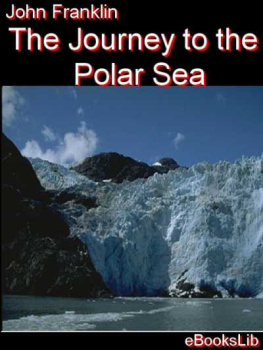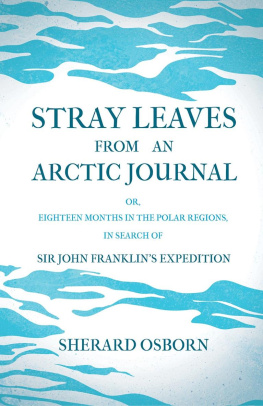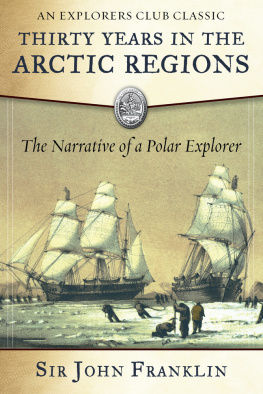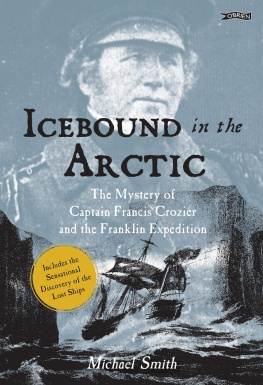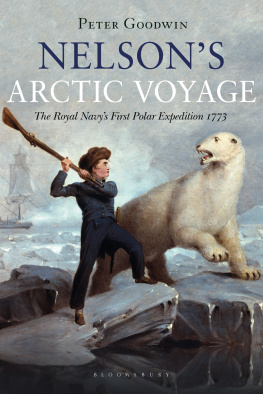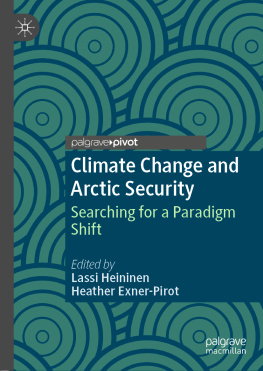First published in English by Greystone Books in 2022 Originally published in German as Eingefroren am Nordpol, Markus Rex in collaboration with Marlene Gring, 2020 by C. Bertelsmann Verlag, a division of Penguin Random House Verlagsgruppe GmbH, Mnchen, Germany English translation copyright 2022 by Sarah Pybus
22 23 24 25 26 5 4 3 2 1
All rights reserved. No part of this book may be reproduced, stored in a retrieval system or transmitted, in any form or by any means, without the prior written consent of the publisher or a license from The Canadian Copyright Licensing Agency (Access Copyright). For a copyright license, visit accesscopyright.ca or call toll free to 1-800-893-5777.
Greystone Books Ltd.
greystonebooks.com
David Suzuki Institute
davidsuzukiinstitute.org
Cataloguing data available from Library and Archives Canada
ISBN 978-1-77164-948-3 (cloth)
ISBN 978-1-77164-949-0 (epub)
Copy editing by Paula Ayer
Proofreading by Dawn Loewen
Indexing by Stephen Ullstrom
Jacket and interior design by Fiona Siu
Jacket photograph by Markus Rex
Greystone Books gratefully acknowledges the Musqueam, Squamish, and Tsleil-Waututh peoples on whose land our Vancouver head office is located.
Greystone Books thanks the Canada Council for the Arts, the British Columbia Arts Council, the Province of British Columbia through the Book Publishing Tax Credit, and the Government of Canada for supporting our publishing activities.
The translation of this work was supported by a grant from the Goethe-Institut.

For Friederike, Tim, and Philipp
Contents

Translators Note
The measurements in this book have been converted to customary units from the original metric and rounded where applicable. For the readers convenience, temperatures are given in both Celsius (C) and Fahrenheit (F).
Prologue
Unseen and untrodden under their spotless mantle of ice the rigid polar regions slept the profound sleep of death from the earliest dawn of time. Wrapped in his white shroud, the mighty giant stretched his clammy ice-limbs abroad, and dreamed his age-long dreams.
Ages passeddeep was the silence.
Then, in the dawn of history, far away in the south, the awakening spirit of man reared its head on high and gazed over the earth. To the south it encountered warmth, to the north, cold; and behind the boundaries of the unknown it placed in imagination the twin kingdoms of consuming heat and of deadly cold.
But the limits of the unknown had to recede step by step before the ever-increasing yearning after light and knowledge of the human mind, till they made a stand in the north at the threshold of Natures great Ice Temple of the polar regions with their endless silence.
Up to this point no insuperable obstacles had opposed the progress of the advancing hosts, which confidently proceeded on their way. But here the ramparts of ice and the long darkness of winter brought them to bay.
THUS BEGINS FRIDTJOF NANSENS 1897 account of his pioneering polar expedition. Since then, we have unraveled most of our home planets secrets, studying and measuring even the most remote areas with the latest scientific instruments. But the polar regions continue to thwart our urge to explore. Even today, the light of our knowledge dims as the central Arctic, the region north of the eighty-fifth parallel, enters its winter months. The ice on the Arctic Ocean is too impenetrable, the conditions too adverse. No research icebreaker has managed to find a way through. No one has studied the central Arctics complex climate processes all year round.
Until now. The brainchild of twenty nations, the MOSAiC expedition (Multidisciplinary drifting Observatory for the Study of Arctic Climate) is a major feat of international collaboration. Aboard the Polarstern, the first modern research icebreaker to spend an entire year in the central Arctic, a team of researchers reveals the secrets of the Arctic and studies the North Poles immediate surroundings, even in winter. In an expedition that pushes the boundaries of possibility, the Polarstern spends the winter firmly frozen into the central Arctic ice, supported by a fleet of six further icebreakers and research vessels, devoting an entire year to collecting the data we so desperately need.
The Arctic is the epicenter of climate change. It is warming more rapidly than anywhere else on Earth, at least twice as fast as the rest of the planet and even faster in winter. There is still much we do not understand. The Arctic is where our climate models operate with least certainty; warming predictions to the end of the century can differ by up to a factor of threein the worst-case scenario for future greenhouse gas emissions, temperatures are forecast to rise by between 5C (9F) and a whopping 15C (27F). Many models predict that in just a few decades, the Arctic will have no ice in summer. Other models do not. Nobody knows whether or when this will happen. But society needs robust and reliable scientific foundations on which to base urgent, far-reaching climate-protection measures.
Climate models are based on data and a precise understanding of climate system processes, which we must re-create as realistically as possible with our computers. This is the only way for models to return reliable results. But how can we do this for a region in which we have never managed to observe the climate system with our state-of-the-art equipment? Without these observations, models have to make ad hoc assumptions about how these processes work. You might say they have to guess. This leads to huge uncertainties in their projections of climate change.
And yet the Arctic is the crucible of weather and climate in Europe, North America, and Asia, which together house a significant proportion of the worlds population. The contrast in temperatures between the cold Arctic and the warmer mid-latitudes drives the main wind system in the northern hemisphere and plays a considerable role in our weather. The rapid warming of the Arctic alters this contrast, increasing and intensifying extreme weather in our latitudes. With so little information about Arctic processes, it is currently difficult to say with any certainty what an ice-free Arctic summer would mean for our climate.
So how do you reach the central Arctic in winter, when the ice is so thick that even our best research icebreakers cant get through? Our expedition follows in the footsteps of Fridtjof Nansen, the polar pioneer who discovered the Arctic ice drift. Inspired by the discovery, north of Greenland, of the remains of the 1879 Jeannette expedition, which foundered in the ice off Siberia, Nansen used the Transpolar Drifta conveyor belt of ice that moves across the polar capto travel deeper into the central Arctic than ever before. He allowed the Fram, a specially built wooden sailing ship, to be trapped in the ice off the Siberian coast in the area where the drift begins; within three years, the ice flow had carried the ship across the polar cap and into the North Atlantic.



